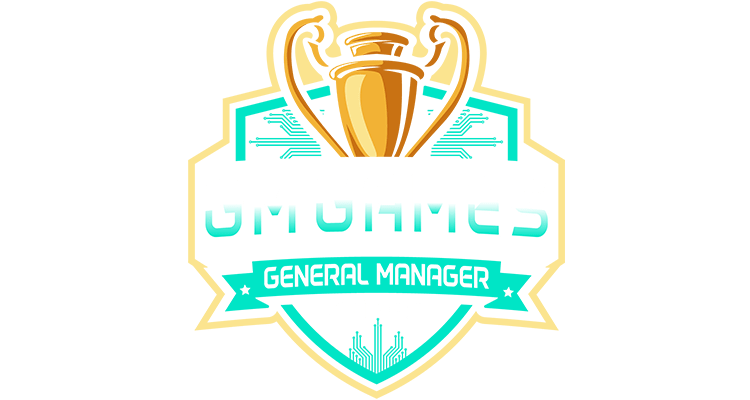After months of beta testing Franchise Hockey Manager 2014 has been released to the public! Below are some of the features and screenshots from the first release. General Manager Games will be following up with a review in the near future. Click on the Official Download now to obtain a copy!
Life as a General Manager
This is as close as you’ll get to sitting in a GM’s office without drawing a paycheck from a team. Oversee team finances, keep an eye on the salary cap, check on your assistance coaches and scouts, watch the waiver wire, put together trade packages, make contract offers to free agents, and much more.
What’s your long-term plan for the team? Will your owner give you enough budget room to sign a few high-profile free agents? Would you rather trade away top talent and focus on the draft? Be careful, because you could get fired if you don’t live up to the owner’s expectations.
If you want to edit anything in your league, simply turn on commissioner mode and change player ratings, modify financial parameters, and much more.
Leagues
A truly global game, FHM features NHL, AHL, OHL, WHL, Liiga, EIHL, KHL, SHL, and many more leagues, with hundreds of real teams and thousands of realistically rated real players included. Take control of your favorite team and set lineups and strategies, draft the next crop of superstars, haggle over trades, negotiate with free agents, navigate the choppy waters of injuries, and prepare your players for the grind of the regular season and the playoffs.
Oversee as many tasks as you want, with the rest handled by the robust AI. Guide your team through unlimited seasons of championship chasing. Take control of one of more than 300 teams across 19 leagues and run every aspect of its operation: set lineups and strategies, draft the next crop of superstars, haggle over trades, negotiate with free agents, navigate the choppy waters of injuries, and prepare your players for the grind of the regular season and the playoffs.
Launch a 2013-14 season and guide your club through unlimited seasons of championship chasing or travel as far back as 1947 and take control of your favorite NHL or WHA team. See if you can replicate their success or chart a new course through history. And, of course, you can also create a custom league configured the way you want, with fresh fictional players ready to turn into a new crop of superstars.
A Living League
When you start a new game, your league will come alive with news articles, messages from other GMs and players, announcements of upcoming milestones (a player’s 500th career goal, for example), and more. You’ll read about hat tricks, thrilling come-from-behind victories, key trades, devastating injuries, and other important happenings.
Players also have their own personalities, and their attitudes can affect their performance. A veteran may become disgruntled if his contract will expire soon and you haven’t offered him an extension. A young phenom will be thrilled with a generous contract offer. Your goalie could grow irritated if you bench him in favor of his backup.
FHM also features the FaceGen engine, which offers realistic portraits for all your players. Their faces change as they age and as their moods change, and their jerseys change when they switch teams. You can also import photos and team and league logos.
Player Ratings
Players’ ratings are divided into six groups: Offense, Defense, Goalie, Mental, Physical, and Hidden. While Hidden ratings can only be seen when you turn on commissioner mode, most of them don’t change. The Offense, Defense, and Goalie ratings can increase or decrease each month according to a series of checks the game performs for each player – see producer Jeff Riddolls’ in-depth explanation of the process on our forum to learn more.
The short version is that checks against a players’ Coachability rating determine how likely it is that any of their Offense, Defense, and Goalie ratings will improve each month. FHM automatically assigns the best position coach to each player, and a check against the coach offers another opportunity for a rating to improve. Failed checks in the first two steps mean the player will receive a penalty against any chance of improvement, although that chance will never equal zero.
Those ratings can’t exceed their potential ratings, but there is the occasional chance that a potential rating will increase and offer more headroom for improvement.
Checks against Physical ratings happen twice a year. They are most likely to improve when a player is young – any chance of improvement ends at age 28. Some of the Mental ratings will almost never change while others may improve by one point, at the most, every four years.
| Offensive Ratings: Getting Open Offensive Read Passing Puck Handling Screening Shooting Accuracy Shooting Range | Defensive Ratings: Checking Defensive Read Face-offs Hitting Poke Checking Positioning Shot Blocking | Goalie Ratings: Blocker Glove Low Shots Positioning Rebound Recovery Reflexes Passing Poke Checking Puck Handling Skating |
| Mental Ratings (Goalies): Mental Toughness Goaltender StaminaMental Ratings (Skaters): Aggression Bravery Coachability Determination Leadership Team Player Temperament | Physical Ratings: Acceleration Agility Balance Fighting Speed Stamina Strength | Hidden Ratings: Adaptability Aging Ambition Big Games Consistency Greed Injury Proneness Loyalty Pass/Shoot Tendency Sportsmanship |
Player Aging and Development
Slightly less than half of a player’s ratings will decline over time, primarily the Physical ones. On average, typical first-line NHL stars will see a decline to baseline skills in about four years, with another three or four years before they become fourth-line players whose careers are close to wrapping up.
When you turn on Commissioner Mode, you’ll see an Aging rating among the hidden ones. Aging changes according to events in a player’s life – major injuries will force a premature career decline (if they’re still young, normal improvement will somewhat counteract that) while players who remain relatively healthy will have more years of productivity. With a bit of luck, a few players will remain superstars much longer than most.
Each August, FHM performs a retirement check according to each player’s current age, Aging rating, and number of seasons left on his contract. While the game is aggressive about ensuring that quality free agents find new homes during the offseason, players at lower levels will likely end up retiring if they don’t receive any contract offers.
In general, most players in high-level leagues who have productive careers and remain free of major injuries will probably retire in their late 30s.
[justified_image_grid preset=12 row_height=245 prettyphoto_social=yes prettyphoto_theme=dark_rounded lightbox=prettyphoto max_rows=2 custom_width=760 width_mode=responsive_fallback randomize_width=100 developer_link=hide ng_random_images=20]

